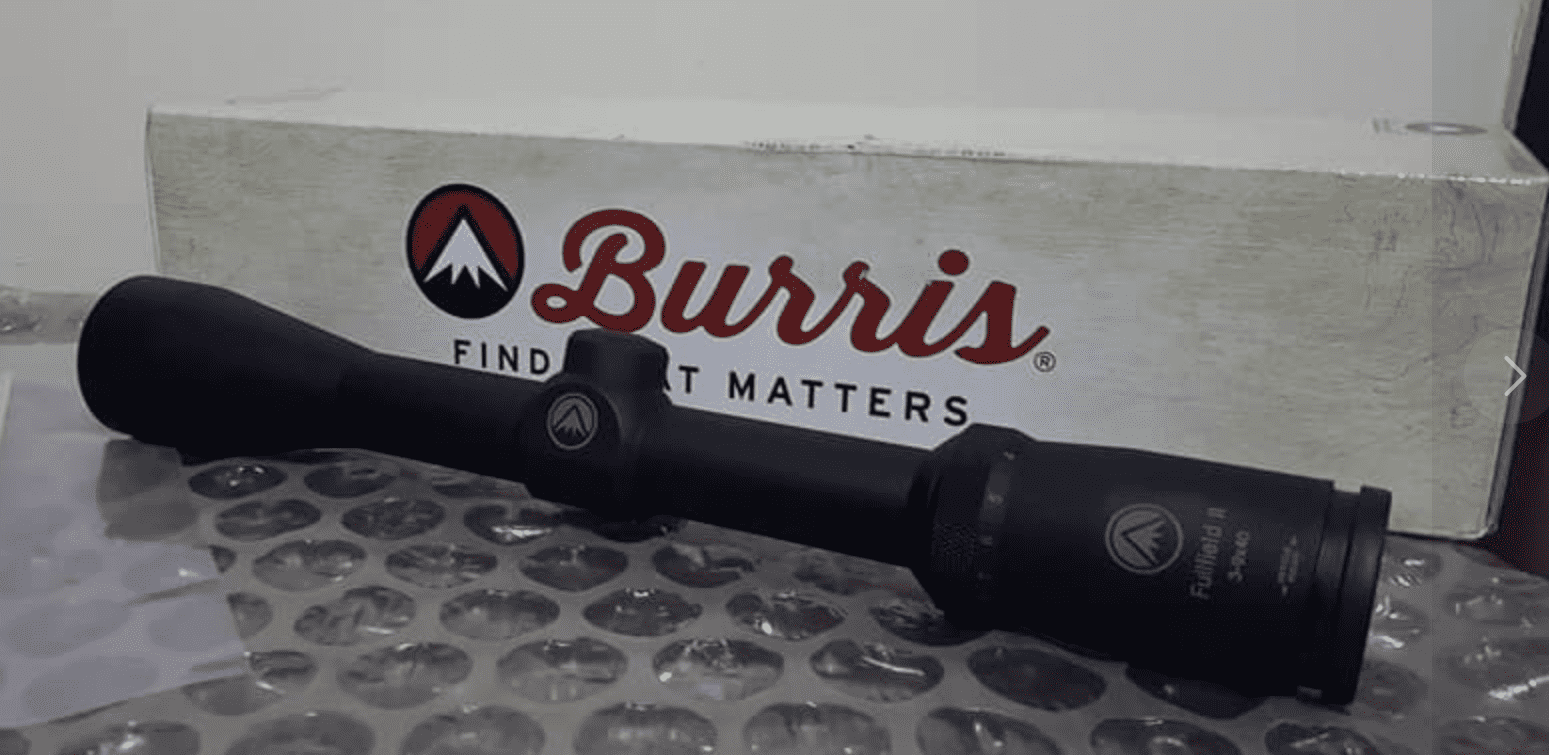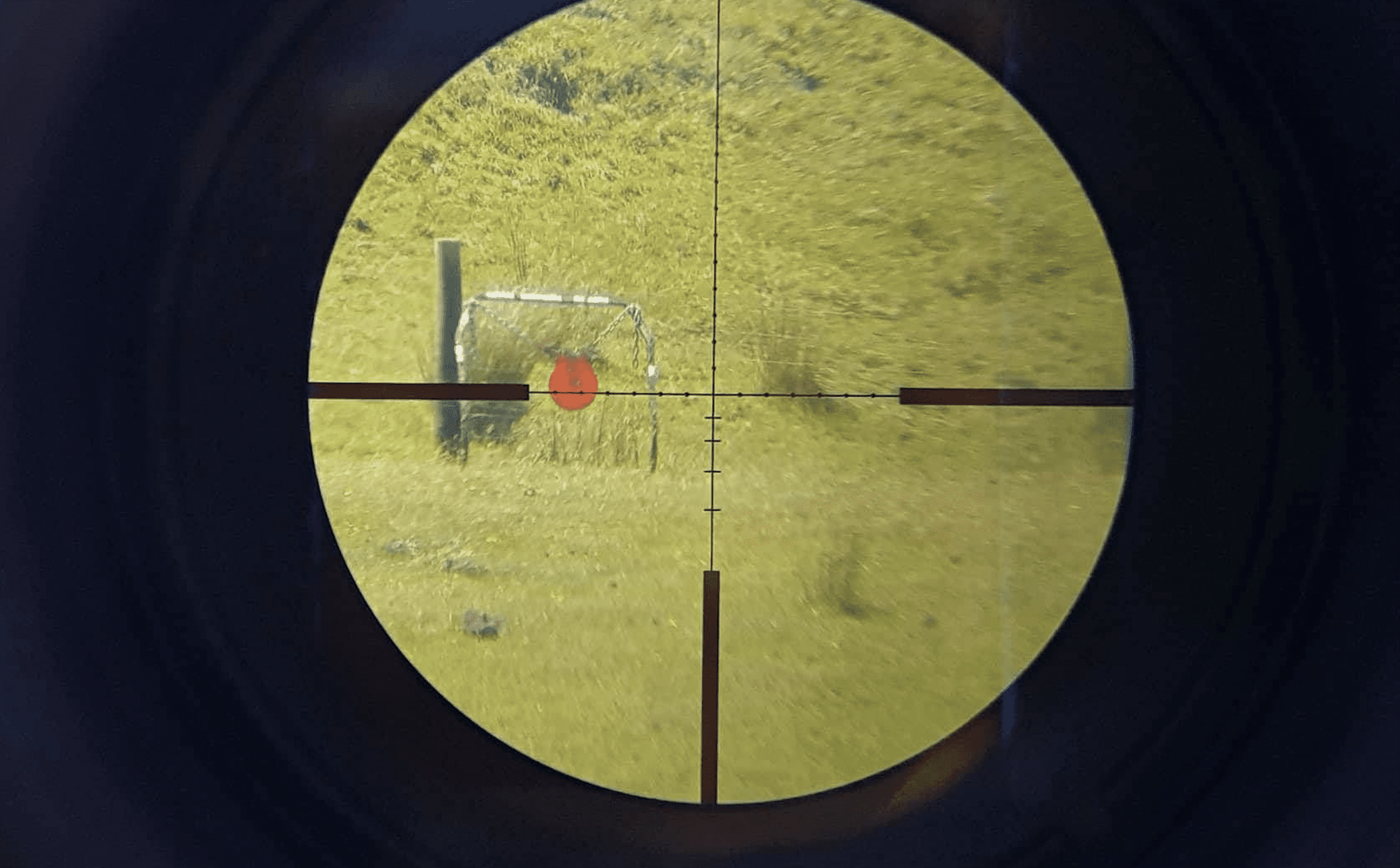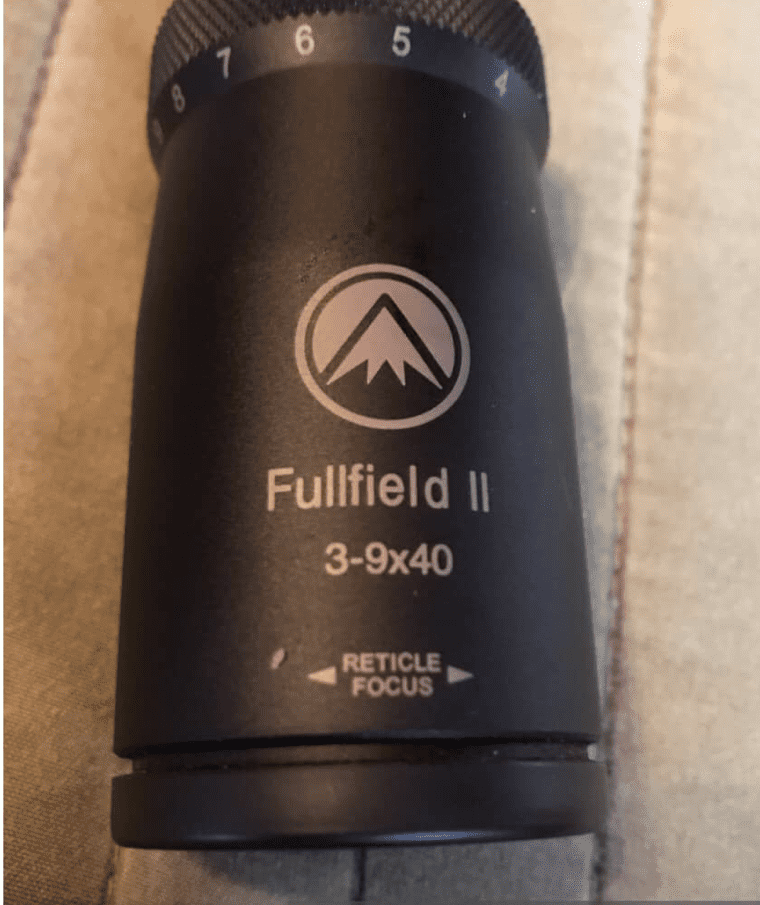Three seasons ago, I picked up the Burris Fullfield II 3-9×40 after my old scope finally gave up the ghost during a particularly rough elk hunt in Colorado. What I needed was something reliable, affordable, and built for the kind of abuse that comes with serious backcountry hunting. After countless hours in deer stands, multiple hunting seasons, and some unexpected durability tests courtesy of Mother Nature, I’m ready to share what this classic hunting scope is really about.
This isn’t just another scope review – it’s about finding out whether an affordable hunting optic can handle everything from dawn sits in November to those last-light opportunities that make or break a season.
Why You Should Trust Me?
I’ve been hunting for nearly 15 years, cutting my teeth on Wisconsin whitetails before branching out to elk, mule deer, and antelope across the western states. Most of my experience comes from real hunting situations – the kind where equipment failures mean empty freezers and missed opportunities. I run a local hunting mentorship program and spend about 60 days a year in the field, either hunting or helping others learn the ropes.
I’ve mounted scopes on everything from lightweight mountain rifles to heavy timber guns, and I’ve learned that hunting optics need to work when it counts most – in terrible weather, at weird angles, and when your heart’s pounding at 180 beats per minute. My testing focuses on how gear performs during actual hunts, not just on the bench.
How I Tested the Burris Fullfield II
This scope has lived on my Remington 700 in .30-06 for the past three hunting seasons. I chose this combination because it represents what most hunters actually use – a common rifle chambered in a versatile cartridge that sees everything from whitetails to elk. The rifle shoots 150gr Core-Lokts into consistent 1.5 MOA groups, which is more than adequate for hunting applications.
My testing was purely hunting-focused. I wanted to know how this scope performs during morning sit-downs when it’s 15 degrees, how it holds zero after bouncing around in an ATV for miles, and whether I can spot deer movement at last light when the woods turn gray. Over three seasons, this scope has been with me on 45+ hunting days across five different states.
Burris Fullfield II 3-9×40 Review
Burris Fullfield II 3-9×40 Specs
| Specification | Value |
|---|---|
| Magnification | 3-9x |
| Objective Lens | 40mm |
| Eye Relief | 3.1-3.4 inches |
| Field of View | 31-13 ft @ 100 yards |
| Tube Size | 1 inch |
| Click Value | 1/4 MOA |
| Parallax | Fixed at 100 yards |
| Length | 12.4 inches |
| Weight | 13 ounces |
My Test Results
| Hunting Test | Result | Notes |
|---|---|---|
| Dawn Visibility | Very Good | Clear view 30 min before sunrise |
| Dusk Performance | Good | Usable 25 min after sunset |
| 200yd Accuracy | 1.8 MOA | 5-shot groups with hunting ammo |
| Zero Retention | Excellent | No shift after 3 hunting seasons |
| Cold Weather | Pass | Tested to -5°F multiple times |
| Rain Test | Pass | No fogging in heavy downpours |
| Drop Test | Pass | Survived 4-foot fall from tree stand |
| ATV Abuse | Pass | Hundreds of miles on rough trails |
Testing conducted during actual hunting conditions with Remington 700 .30-06 using 150gr Core-Lokt ammunition.
Optical Performance & Reticle
The Ballistic Plex reticle is where this scope really shines for hunters. Those hash marks below the main crosshair aren’t just decoration – they actually correspond to bullet drop at longer ranges when you’ve got your rifle properly zeroed. I spent time at the range working out the distances for my .30-06 load, and the system works better than I expected for hunting situations out to about 350 yards.
Glass clarity is what you’d expect from a scope in this price range – perfectly adequate for hunting but not museum-quality. I can easily distinguish antler points at 300 yards on 9x magnification, and that’s really all most hunters need. The Hi-Lume coating does its job well enough that I haven’t struggled with glare during morning hunts when the sun’s coming up behind my target.
Turret System & Tracking
Here’s where the hunting focus becomes obvious – these are capped turrets designed to be set and forgotten. I zeroed mine at 200 yards (perfect for most of my hunting scenarios) and haven’t touched them since. The caps screw on tight enough that they won’t come off accidentally, but they’re easy enough to remove when you need to make adjustments.
The clicks are positive and audible, which is helpful when you’re wearing gloves or working in low light. I’ve made a few adjustments over the years for different ammunition, and the turrets track consistently. They’re not target-grade precision, but they’re more than accurate enough for hunting applications where you’re usually making large corrections rather than fine-tuning for tiny groups.
Magnification Range & Parallax
The 3-9x range hits the sweet spot for most hunting situations. At 3x, I’ve got enough field of view to track running deer through thick timber, and the magnification is low enough that it’s not disorienting when something pops out at close range. At 9x, I can make precise shots on small vitals at distances that would challenge most hunters’ shooting abilities.
The fixed parallax at 100 yards is actually a smart choice for a hunting scope. Most of my shots happen between 75 and 250 yards, and parallax error in that range is minimal enough that it won’t affect shot placement on deer-sized vitals. Sure, it’s not ideal for long-range precision work, but that’s not what this scope is designed for.
Eye Relief & Eye Box
This is probably the scope’s biggest limitation for some hunters. The eye relief varies from 3.1 to 3.4 inches depending on magnification, which can be tight if you’re shooting a hard-recoiling rifle or prefer to mount your scope further forward. I’ve been fine with it on my .30-06, but I wouldn’t recommend it for magnums without careful attention to scope placement.
The eye box gets noticeably smaller at higher magnifications, which means you need to be pretty precise with your head placement when using 8x or 9x. This hasn’t been a problem for me in hunting situations where I typically have time to get properly positioned, but it might be an issue for quick shots at moving game.
Build Quality
After three hunting seasons of real-world abuse, this scope has held up remarkably well. The one-piece tube construction feels solid, and the integrated eyepiece design eliminates a potential failure point. The matte finish has held up to brush, rain, and general hunting wear without any significant cosmetic damage.
The nitrogen filling has done its job – I’ve never had fogging issues even during extreme temperature swings or heavy rain. The scope has survived a few drops (including one memorable tumble from a tree stand), multiple ATV rides over rough terrain, and countless freeze-thaw cycles without losing zero or showing any internal damage.
Mounting & Accessories
For this scope, I used:
- Burris Signature Zee rings (1-inch, medium height)
- Standard Weaver-style bases
- Burris lens caps (the flip-up kind)
- Basic lens cleaning cloth
Performance Scores
| Category | Score | Notes |
|---|---|---|
| Hunting Optics | 17/20 | Clear enough for game identification |
| Durability | 22/25 | Outstanding field durability |
| Practicality | 18/20 | Perfect for hunting applications |
| Value | 14/15 | Exceptional bang for the buck |
| Features | 8/10 | Has what hunters need, nothing more |
| Reticle Design | 8/10 | Ballistic Plex works great for hunting |
| Total Score | 87/100 | Excellent hunting scope for the money |
Scoring based on hunting performance, not precision shooting applications. See how I test and rate scopes. Learn more
Advantages:
- Bulletproof reliability in field conditions
- Ballistic Plex reticle is genuinely useful
- Outstanding value for money
- Lightweight for backpack hunting
- Forever warranty from Burris
Drawbacks:
- Limited eye relief can be problematic
- Eye box gets tight at higher magnifications
- Glass quality is adequate but not exceptional
- Fixed parallax limits versatility
How It Compares Against Similar Optics
| Scope Comparison | Glass Quality | Durability | Hunting Features | Overall Score |
|---|---|---|---|---|
| Burris Fullfield II | Good | Excellent | Very Good | 87/100 |
| Leupold VX-Freedom | Very Good | Excellent | Good | 85/100 |
| Bushnell Banner | Fair | Good | Fair | 75/100 |
| Redfield Revolution | Good | Very Good | Good | 82/100 |
The Leupold VX-Freedom definitely has better glass and a more generous eye box, but you’re paying almost double for improvements that won’t matter much during actual hunting. The Leupold name carries weight, and their reputation is well-deserved, but the Burris delivers 90% of the performance at half the cost.
The Bushnell Banner series represents the true budget end of hunting scopes, and while they’ll get the job done, the difference in build quality and optical clarity compared to the Burris is noticeable. For the extra $50-60, the Fullfield II offers significantly better durability and glass quality that’s worth the investment for serious hunters.
Redfield’s Revolution scope sits right between the Burris and Leupold in terms of price and performance. It has some nice features and solid construction, but I prefer the proven track record and better reticle system of the Fullfield II. The Revolution’s TAC-MOA reticle is okay, but it’s not as intuitive as the Ballistic Plex for field use.
Frequently Asked Questions
Is this scope suitable for elk hunting?
Absolutely. I’ve taken it on two elk hunts, and it performed flawlessly. The 9x magnification is more than adequate for ethical shot distances on elk, and the Ballistic Plex reticle makes it easy to compensate for bullet drop at longer ranges. The scope held zero perfectly despite the rough handling that comes with backcountry hunting.
How does it handle recoil from magnum cartridges?
While I’ve primarily used mine on a .30-06, I’ve seen them mounted on .300 Win Mags and 7mm Remington Magnums without issues. The steel-on-steel adjustment system and one-piece tube construction are built to handle serious recoil. Just pay careful attention to eye relief with the big magnums.
What’s the deal with Burris’s Forever Warranty?
It’s exactly what it sounds like – they’ll fix or replace your scope forever, no questions asked. I haven’t needed to use it yet, but several hunting buddies have sent scopes back to Burris over the years, and they’ve always been taken care of quickly and professionally. It’s transferable too, which is nice if you sell the scope.
Can I use this for target shooting?
Sure, but it’s not really designed for that application. The capped turrets and hunting-focused reticle work better for field use than precision target work. If you’re mainly doing target shooting, you’d probably be happier with something that has target turrets and a mil-dot or similar reticle.
Final Words
After three hunting seasons and countless hours behind this scope, I can say with confidence that the Burris Fullfield II 3-9×40 is one of the best hunting scope values available today. It’s not trying to be everything to everyone – it’s specifically designed to be a reliable, accurate, and affordable hunting optic, and it succeeds brilliantly at that mission.
The optical quality is good enough to do everything most hunters need, the Ballistic Plex reticle actually works for extended-range shots, and the durability has been outstanding. Yes, the eye relief could be better, and the glass isn’t quite as bright as scopes costing twice as much. But for the vast majority of hunting situations, these limitations simply don’t matter.
If you’re looking for a scope that will reliably help you put meat in the freezer without breaking your budget, the Fullfield II deserves serious consideration. It’s been doing exactly that for hunters for decades, and based on my experience, it’ll continue to do so for many seasons to come. Sometimes the best gear isn’t the fanciest or most expensive – it’s the stuff that simply works when you need it to.

Hi, I am Jerry L. Miculek and I am experienced firearms and optics expert. Guns are not just a hobby for me, they are my passion and life. You can learn more about me on my About page.